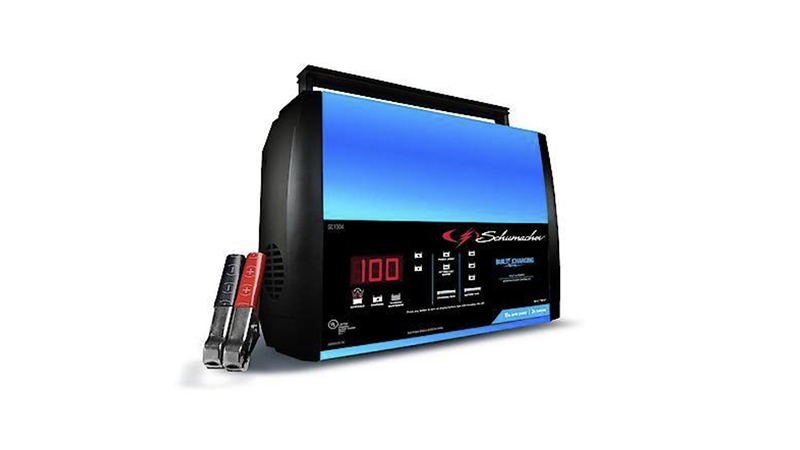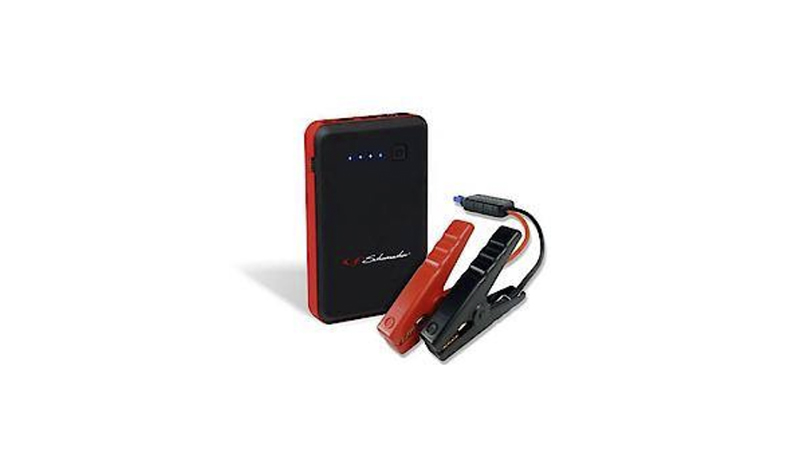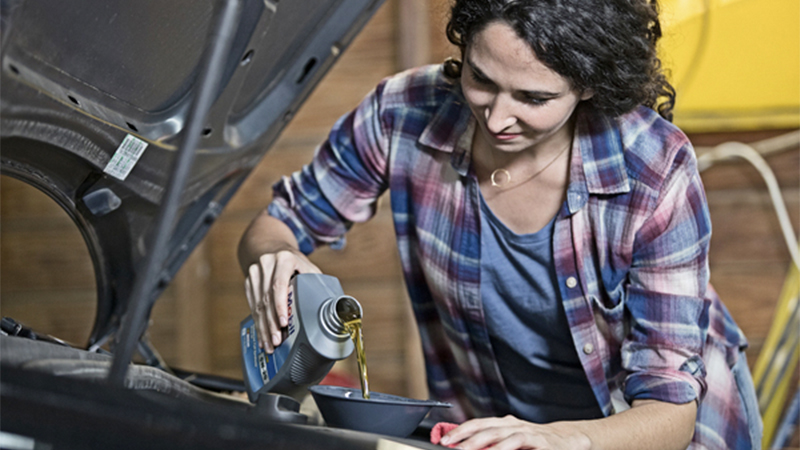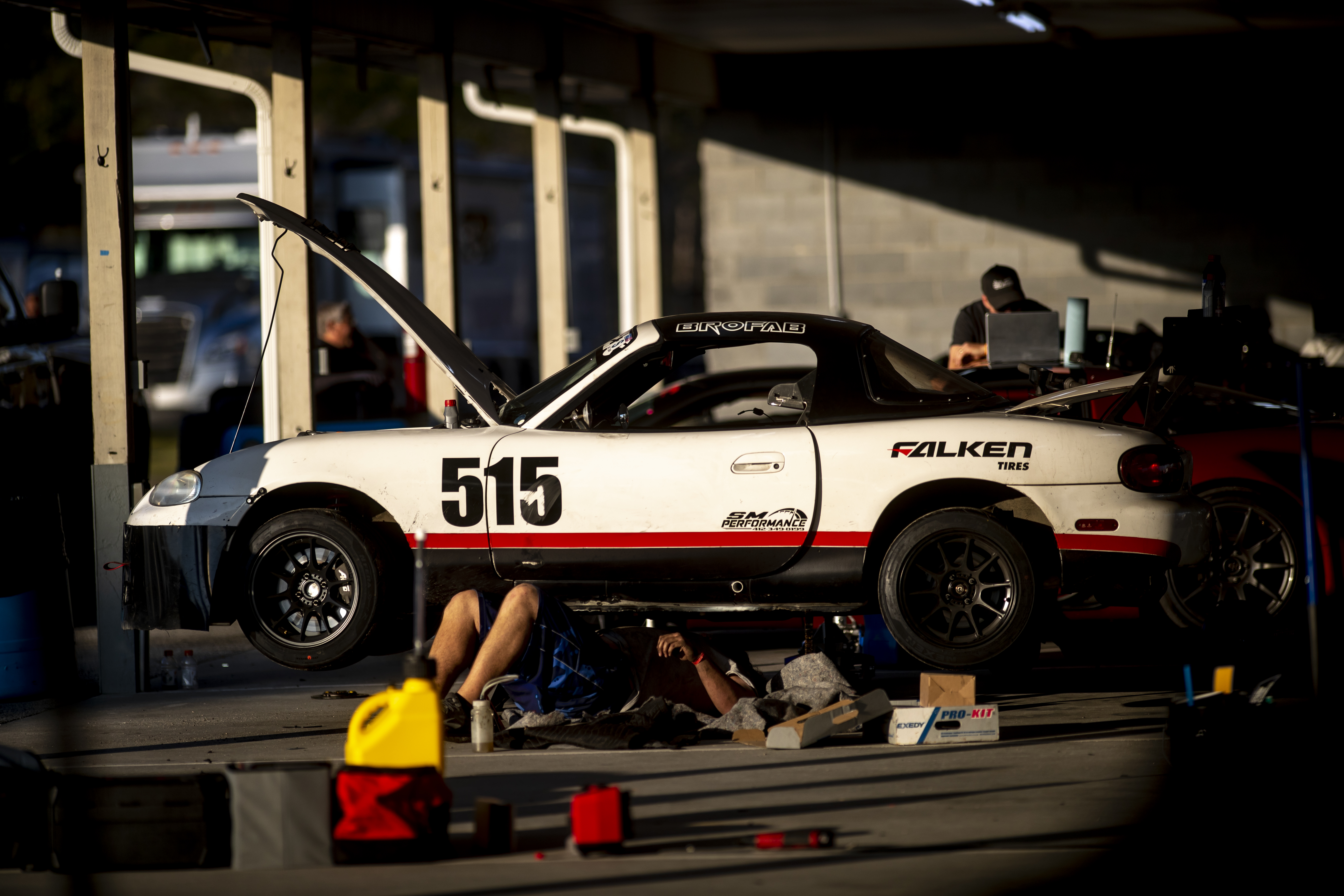If you're not driving frequently, it's easy to forget all about your vehicle. However, cars are made to be driven. If they aren't, things like seals and gaskets can dry out, shrink and degrade. Tires will flat-spot or dry-rot, and there are some common problems that develop over time as your vehicle sits. Here are some easy solutions to deal with and prevent those problems from happening to you.

Source | Getty
Batteries
Problem: Your battery will discharge.
Solution: Drive periodically or keep a trickle charger on it.
Has your vehicle been sitting for a few weeks? If so, you're risking a dead battery. All batteries slowly discharge over time because of internal chemical reactions, plus the very slight battery drain that maintains the vehicle's clock and radio presets. Also, some vehicle monitors continue to run even your car isn't, which creates an additional small drain on the battery. After starting the engine, your alternator creates the electricity that powers everything in your vehicle, and it recharges the battery as you drive. So if you're not driving, your battery isn't getting charged.

Modern battery tenders will prevent overcharging the battery | Advance Auto Parts
Many good batteries will be able to hold a charge for up to a month. But in general, the more electronics your vehicle is equipped with, the less time the battery will hold up without being charged. My Toyota Corolla battery, for example, might last longer without recharging than the one in your Lexus LS460.
Keep in mind that just like with a cell phone or laptop, your car's battery can only do so many charge/recharge cycles before it starts to degrade. Older batteries are likely going to drain more quickly than a new battery. In this situation, there are a couple of steps you can take. The first is prevention—using a battery tender that maintains your battery's charge is handy way to avoid having to jump the battery.

A safe, easy alternative to jumper cables | Advance Auto Parts
And that brings us to the second step. If you do need a jump, my personal preference is a portable jumper. Jumper cables are fine in a pinch, but with a jump box I don't need another vehicle or anyone else around.
The easiest solution? Get out and take a nice drive once a week. Probably around 10 miles or 20 minutes of driving will be sufficient to get that full charge back.
Just be mindful that if you're having to jump your vehicle frequently, it's probably time to get it replaced. There's no good way to test a battery at home, so stopping by Advance Auto Parts for a quick test at your vehicle free of charge is your best bet.
Tires
Problem: Gradual loss of air pressure and possible flat spots
Solution: Check tire pressures and go for drives periodically.
Going for drives to charge your battery also benefits your tires. Tires are slightly porous and naturally lose air over time, generally around 1-2 pounds per square inch (psi) per month just from the migration of air molecules through the walls of the tire. If your vehicle will be in storage for a couple of months, you'll want to keep an eye on the tire pressure. Nowadays most of us have a low pressure indicator light in the dash, but if you have a donut spare, there isn't a sensor to monitor that tire.

Tires that sit for long periods of time can develop flat spots | Lisa Kowite
If you're unsure of the proper pressure for your tires, check the placard on the driver's door jamb. Do not go by the “max pressure" on your tire's sidewall—that is way too much pressure! And, finally, keep in the mind that those donut spares have a different construction and often require more air. Check the sidewall. Mine is 60 psi, compared to my main tires which should be around 30 psi. It's also important to remember that you should check pressure when the tires are hot, as air expands when heated and a cold psi reading won't be accurate.
Another benefit of driving every once in a while is to prevent flat spots on your tires. Low profile tires and underinflated tires are especially prone to this problem, which can develop in as little as a few weeks of sitting stationary. While not unsafe except for the most extreme cases where the tread can split, flat spots will reduce the quality of your ride. You'll feel an up and down vibration, like an out-of-balance tire. Mild flat spots will work themselves out after inflating the tires and driving for a while, while more severe cases cannot be fixed. It's best to prevent flat spots from forming by maintaining the correct air pressure and driving periodically.
Brakes
Problem: Surface rust on brakes makes a grinding sound.
Solution: Drive normally.
How often do you hear of a car problem that costs absolutely nothing to fix? Surface rust is something that most cars that are parked outside experience, sometimes even after just one night. Moisture in the air can create a thin, harmless layer of rust on your brake rotors. It's not a safety concern, but it does sound bad and can be disconcerting if you don't know why your brakes are suddenly grinding.
Fortunately, a few normal brake applications should take care of the problem as your pads make contact with the rotors. Just keep in mind that if you experience any abnormal brake noises (like a metal-on-metal screeching or grinding noise) that don't go away on their own, then it's time for a professional to inspect your brakes.
Fuel
Problem: Fuel goes bad over time.
Solution: Use a fuel stabilizer.
You probably already know this if you've ever had trouble starting a lawn mower in the spring. Fuel does go bad over time, and it can gum up injectors, the fuel filter or the float tank and jets on a carburetor. If you're anticipating not driving for several months, add some fuel stabilizer to your tank to extend the life of your fuel up to 12 months. This one is important because dealing with bad fuel means siphoning out the old fuel, or possibly dropping the gas tank and cleaning out the bad stuff. Wouldn't you rather spend a few bucks preventing all of that?

Fuel stabilizer will extend the life of the fuel | Advance Auto Parts
Paint
Problem: Outdoor elements damage paint.
Solution: Clean, wax and cover.
It's understandable that you might care more about your vehicle's appearance when you're driving it. Consider this, though: dirt, dust, and spring pollens are abrasive. And bird droppings are acidic. Eventually, all of these outdoor elements can damage your paint. In the most extreme cases, if enough paint is removed, rust can form.
Start a good car wash, and then use a wax product to protect the paint. Use a car cover to protect your work. Finally, consider placing an air freshener inside to prevent a musty odor when you're ready to take your next ride.

Source | Advance Auto Parts
Inspect before You Go
If your vehicle has been sitting for at least a few weeks, it's a good idea to do a few quick inspections before heading out. If fact, it's a good idea to do a quick inspection once a month or so in general unless you have a brand new car.
Pro Tip Be sure to enter your vehicle information when shopping with Advance Auto Parts to ensure correct fluid types.
First, check your fluids:
Other inspections can be done in a quick walk around the vehicle:
- Run a finger along your wiper blades and check for tears, chunking, separation or dried-out rubber
- Check tire pressures, including the spare
- Check your bulbs, like headlights and taillights.
As they say, an ounce of prevention is worth a pound of cure. Using these quick, affordable preventative measures will help keep your vehicle healthy while not being driven much.
Do you have other tips for storing your vehicle? Let us know in the comments!









